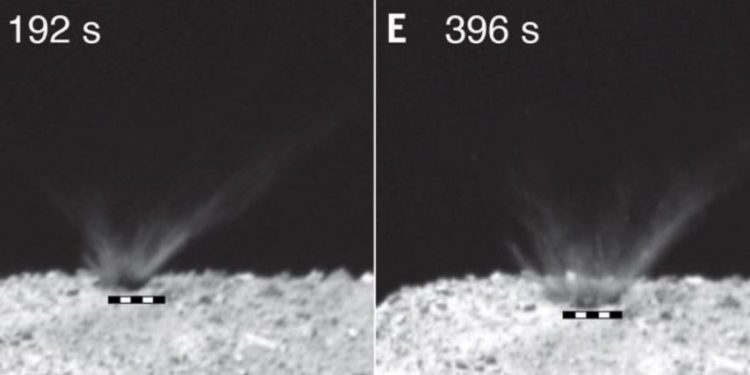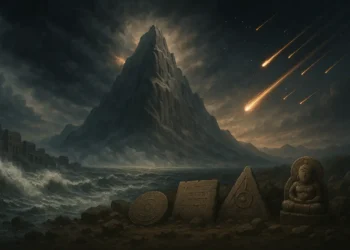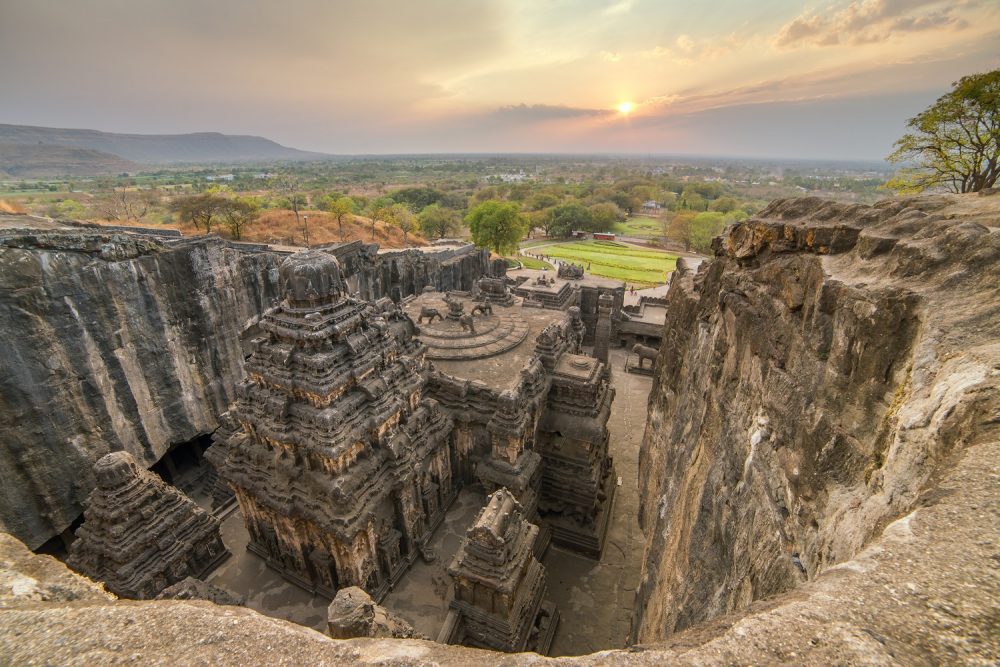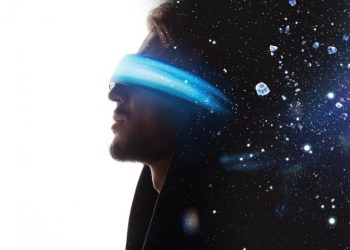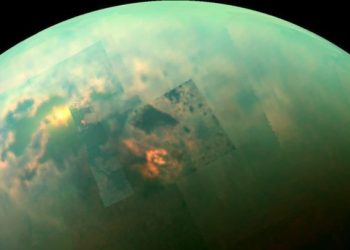The Japanese national Space Agency (JAXA) made its Hayabusa-2 spacecraft—in orbit around Ryugu—bomb the asteroid orbiting the sun at around 300 Million Kilometers from Earth to dig up some material from its surface to study it. Ryugu orbits the sun between the orbit of Earth and Mars.
The spacecraft launched a copper “bomb” the size of a tennis ball, creating a crater on the asteroid’s surface.
JAXA has explained that the bombing of the asteroid revealed stunning details about the space rock, exposing, among other things, its composition and age.
An Asteroid 300 Million Kilometers Away
The impact produced by Hayabusa2’s Small Carry-on Impactor (SCI) created a crater on the surface of Ryugu approximately 10 meters wide. The projectile, whose weight was just around two kilograms, was fired at a velocity of 2 km/s. The spacecraft launched the SCI on 5 April 2019.
The result was a column of ejected material captured by the spacecraft as it flew over the cloud of debris.
The analysis of the debris gathered by the spacecraft, conducted by scientists at Kobe University and published in Science, suggests that Ryugu’s surface is about 8.9 million years old. In contrast, other models suggest that the asteroid’s surface could be up to about 158 million years old.
Scientists say that while Ryugu is made of materials up to 4.6 billion years old, the asteroid could have fused with the remains of other broken asteroids only about 10 million years ago, explained Masahiko Arakawa, lead researcher of the study.

Furthermore, scientists suggest that Ryugu’s surface is made of a cohesion-free material, similar to loose sand.
The number and size of craters spotted on asteroids like Ryugu can be used in subsequent studies to determine asteroids’ age and surface properties.
However, these studies require a general understanding of the nature of crater formation – the crater scale laws – which is often derived from laboratory experiments or numerical simulations.
Arakawa and colleagues use observations from the SCI impact experiment to test the crater scale laws and obtain new, unprecedented data from the surface of Ryugu.
They describe the artificial impact crater as semicircular with a raised rim, a central hole, and an asymmetric ejection pattern, perhaps due to the presence of a large buried rock near the point of impact.
The results suggest that the crater grew in the gravity-dominated regime, where the size of the crater is limited by the local gravitational field, a discovery that, according to the authors of the study, has implications for estimates of the surface age of asteroids.
The Hayabusa2 spacecraft reached the near-Earth asteroid (162173) Ryugu in June 2018, finding that this one-kilometer-long cosmic body is covered with boulders with sizes up to around 160 meters.
The surface is covered with a regolith layer composed of boulders and granules.
After a successful mission, JAXA ordered the spacecraft to begin its journey back to earth in November 2019.
Update 2021
The Japanese mission successfully delivered asteroid samples to Earth, allowing experts to obtain an unprecedented view of materials formed during the solar system’s earliest phases.
As explained by JAXA, “many particles larger than 1mm were found in both chambers A and C. It appears that the particles in chamber C are typically bigger than those in chamber A. Chamber C material was gathered during the second touchdown, which is expected to contain subsurface material ejected from the creation of the artificial crater.”
One of the containers the spacecraft filled with surface materials from the asteroid unexpectedly featured an artifact of artificial origin.
The spacecraft is currently located at 21,262,651km from Earth, heading towards its next mission target.
The mission has been extended through at least 2031 when the spacecraft is expected to rendezvous with the 1998 KY26 asteroid to study it.
Join the discussion and participate in awesome giveaways in our mobile Telegram group. Join Curiosmos on Telegram Today. t.me/Curiosmos



